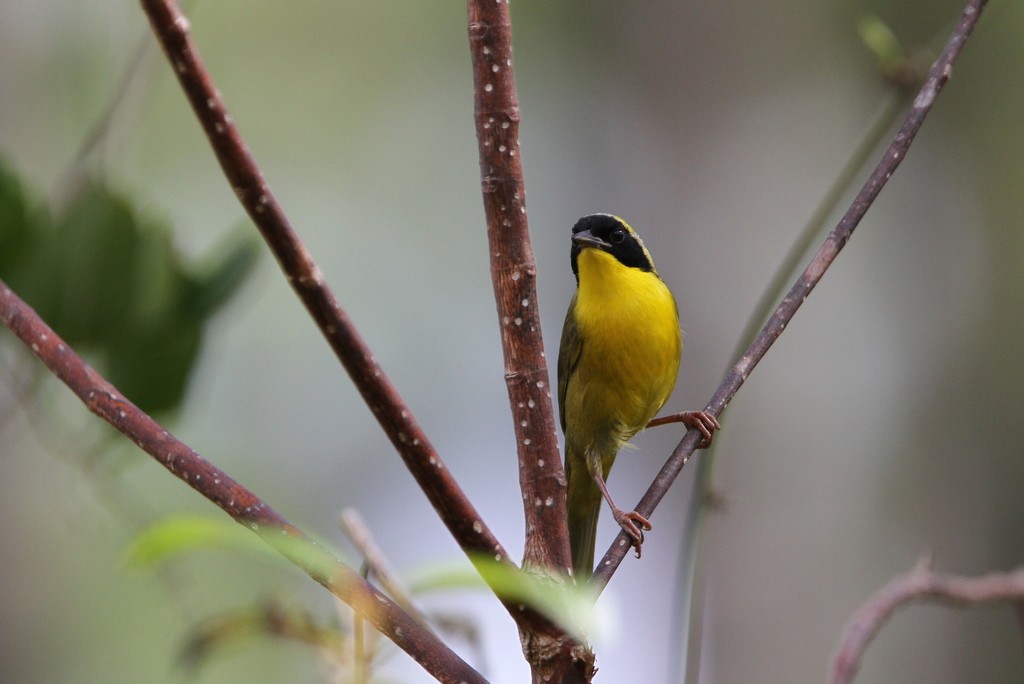Bahama Yellowthroat
A species of Yellowthroats Scientific name : Geothlypis rostrata Genus : Yellowthroats
Bahama Yellowthroat, A species of Yellowthroats
Botanical name: Geothlypis rostrata
Genus: Yellowthroats
Content
Description General Info
Description
Bahama yellowthroat is 15 cm long with a large bill. The adult male of the nominate race G. r. rostrata, found on Andros and New Providence islands has an olive-green back and mainly yellow underparts, slightly paler on the belly. It has a black facemask and grey forecrown. The female is similar, but lacks the black mask and has a grey crown; she may have a whiter belly. The adult male of G. r. tanneri, found on Grand Bahama, Great Abaco and associated islands, has a yellow tinge to the forecrown band, and G. r. coryi of Eleuthera and Cat islands has a mainly yellow forecrown. The Bahama yellowthroat can be distinguished from wintering common yellowthroats by its greater size, heavier bill and slower, more deliberate movements. Males additionally have more extensively yellow underparts, a larger facemask extending onto the nape, and in the case of coryi the distinctive yellow forecrown. Females have a grey wash to the head not shown by common yellowthroat. The song of Bahama yellowthroat is a loud wichety wichety wichety wich, similar to that of common yellowthroat. The call is a softer jip than that of common yellowthoat. 
Size
15 cm
Nest Placement
Shrub
Feeding Habits
Bahama Yellowthroat predominantly consumes insects and berries, foraging in underbrush and foliage with a focus on ground-level feeding. There are no notable unique dietary adaptations or preferences mentioned.
Habitat
Bahama Yellowthroat are typically found in the dense scrubby understory of open pine forests, preferring environments where bracken and thatch palm are dominant. They tend to inhabit regions characterized by pine woodlands, with a particular association to Pinus and Pteridium species, as well as the thatch palm Thrinax morrisii. While bahama Yellowthroat show a preference for dry habitats, they are generally not found in wetter, marshy areas.
Dite type
Insectivorous
General Info
Feeding Habits
Bird food type
Species Status
This species is common, but is outnumbered in winter by migrant common yellowthroats. 
Scientific Classification
Phylum
Chordates Class
Birds Order
Perching birds Family
New world warblers Genus
Yellowthroats Species
Bahama Yellowthroat 